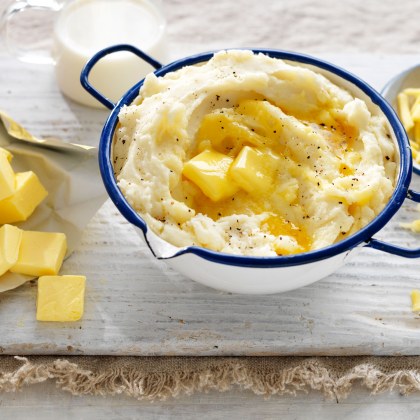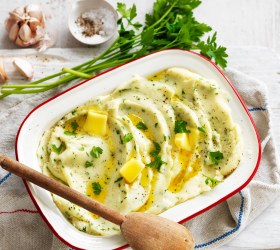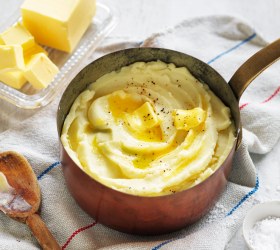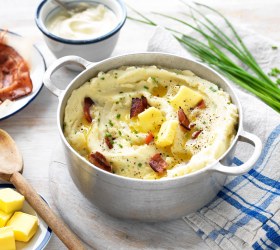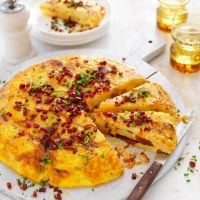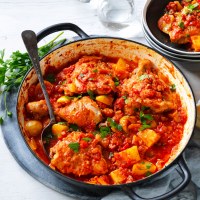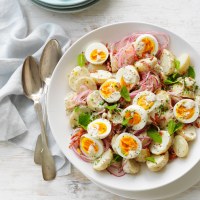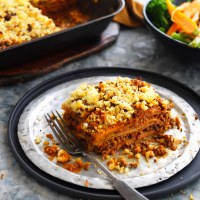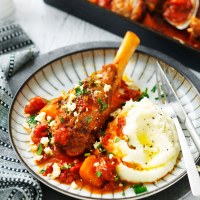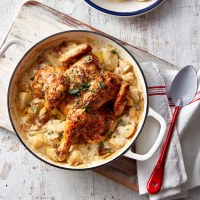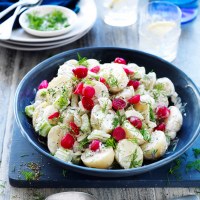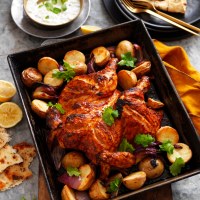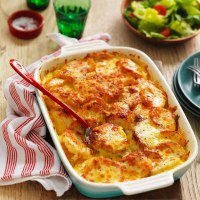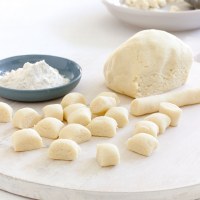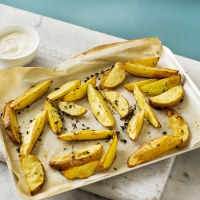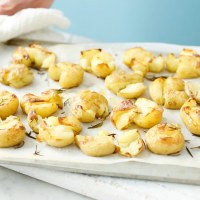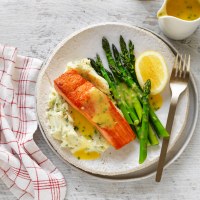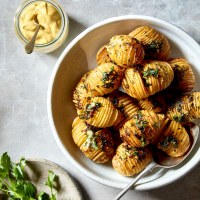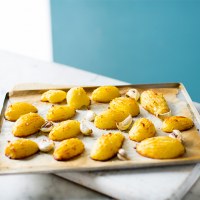How to choose the right potato for your recipe
For home cooks, the potato is a stock staple. Used in so many of our favourite dishes, the humble spud can be used in countless ways and can bring meals together in perfect harmony. Simply tossed with oil and herbs for roast potatoes, sliced and layered into cheesy potato stacks, or fried until golden and fluffy into a hot chip... the list goes on.
But which types of potatoes work best for each recipe? Find out here.
Waxy vs floury potatoes
Potatoes range between being either waxy or floury (also called starchy), with many falling in between. Starchy potato varieties become soft and fluffy when cooked, they don't hold their shape very well which makes them great for mashing and baking. Since they fall apart, avoid using them in salads or stews and curries that are cooked for a long time.
Waxy potatoes are firm yet creamy. This kind of spud holds their shape well, so they're great for making potato salad, hasselback potatoes or simply steamed with butter. They're not so great for mashing, because they hold together and don't become a smooth mash.
Potato varieties that fall between waxy and floury are usually great all-rounders that can be used in many different types of recipes.
How to pick the best potatoes at the supermarket
When selecting potatoes choose smooth, firm potatoes with no wrinkles, cracks, bruises, sprouts, decay or greenness.
Which Australian potatoes are best for boiling, mashing, roasting, salads and more
Pontiac Potato
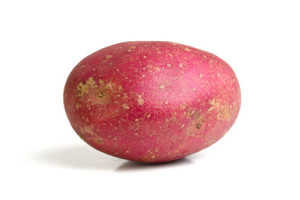
The bright red skinned and white fleshed Pontiac is a popular waxy potato. It can be difficult to peel because of its relatively deep eyes. It is excellent for boiling and salads.
Kipfler Potato
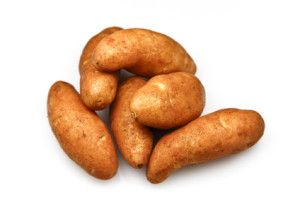
German in origin, the Kipfler is a long, oval potato with yellow skin and flesh. Its flavour is described as nutty. Particularly good when steamed, braised, boiled or microwaved. Great for salads, or try it thinly sliced and used as a topping on pizza.
Desiree Potato
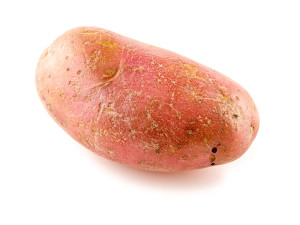
An oval shaped potato (large ones may be elongated) with pink skin and a creamy-yellow coloured flesh. A great creamy all-rounder that is neither waxy or floury, they can be boiled, mashed, baked, roasted, microwaved and used in salads. Not recommended for deep frying, but works well if grated and shallow fried for a potato rosti.
Nadine Potato
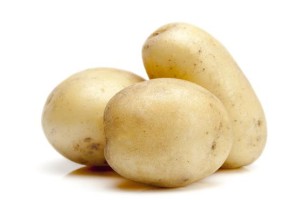
This short, oval shaped potato with a smooth creamy white skin and flesh is ideal for boiling and salads. Its buttery flesh makes it ideal for gnocchi, too.
Nicola Potato
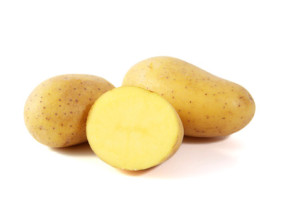
Oblong in shape with a rich yellow skin and yellow buttery flesh, this spud is ideal for salads, baking, boiling and gnocchi.
Kestral Potato

Ideal for boiling, mashing, roasting and frying, Kestrels are a very versatile variety with a delicious slightly-sweet flavour. Their even, oval shape and shallow eyes allow for easy preparation.
How to store potatoes
Store potatoes in a cool, dry, dark and well-ventilated area. Keep away from direct light. Remove from plastic bags as soon as possible to prevent greening. Do not eat green potatoes as they can cause illness.
Preparation
Potato skins hold a lot of nutrients, so it is great to leave skin intact. When peeling, peel as finely as possible to reduce waste. The peels are great for compost bins. When boiling potatoes, cook in a minimum amount of water. If the cooking water is unsalted, it can be cooled and used on plants and gardens. Microwaving is a good water-free way of cooking potatoes.
The benefits of eating potatoes
Potatoes contain almost no fat, in fact less than 0.5g per 1 kg. They provide excellent carbohydrates for energy along with some dietary fibre, vitamin C, B vitamins and iron.
The right ingredients are just as important as the right technique to make the best fluffy, buttery mashed potatoes! Start making better mash with this recipe.
GET THE RECIPE: Tandoori Roast Chicken with Potatoes by Passage to India
This Indian-spiced chicken is delicious served with crispy roasted potatoes.

